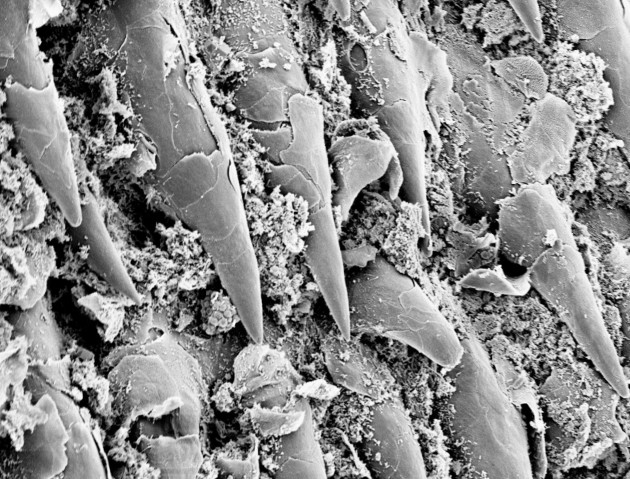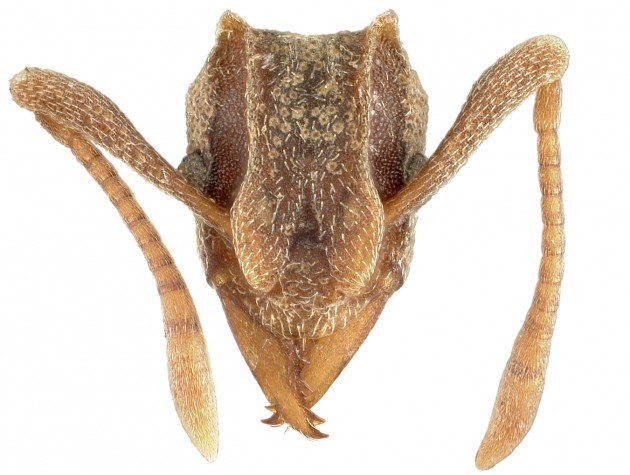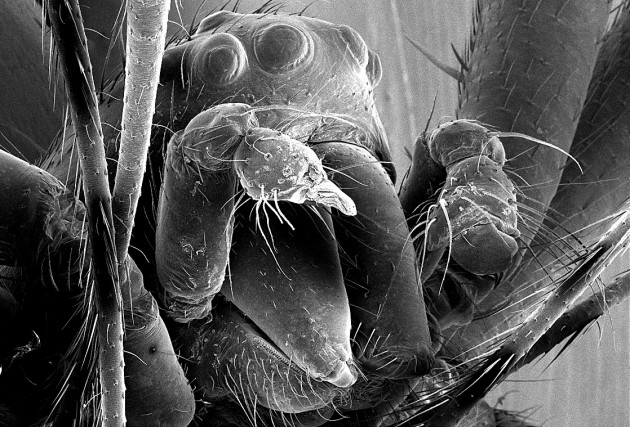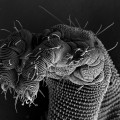From bizarre bugs to penis spines on bats, our world is infinitely expanded when we look down the microscope! Check out the stories behind these amazing images.

This mite, recently discovered in a coca plantation in Brazil, was named “Excelsotarsonemus tupi” in honor of the Tupi people of Brazil, an indigenous tribe that once inhabited most of Brazil’s coastline. Feather-like setae on its body allow it to ride breezes from tree to tree in the forest canopy. It grows brown fungi on its body for food. (Photo courtesy Chris Pooley / Electron & Confocal Microscopy Unit USDA-ARS)
1. Mites: Microscopic in size yet mammoth in species diversity
We have been living with and swallowing mites for thousands of years. They have escaped our detection for so long because most are impossible to see with the naked eye. Now new high-powered microscope technology and the Internet are revealing these bizarre creatures and their micro-worlds. Living in rainforests, deserts and even our own homes, mites have been crawling around the earth since before the dinosaurs and yet we have only just started to discover the huge range and diversity of life we cannot see. Read more…

Bat penis spines in close-up. (Images courtesy Ligiane Moras)
2. Penis spines help scientists identify bat species
These spines look painful up close and even the most brave of us might wince a little to think that they are found on one of the most delicate areas of an animal. Microscopic penis spines are found on many animals, including bats, and for a bat researcher at the Smithsonian’s National Museum of Natural History they are important in helping her to identify different bat species. Read more…

Face of the fungus farming ant C. longiscapus
3. Fungal fidelity: some ants have been eating the same meal for 5 million years!
We all know that ants are very industrious insects, but did you know that many are farmers? Many species of ant have gone into the fungi farming business, cultivating their fungi crops underground to feed their growing colonies. DNA analysis and computer modeling have revealed that some ant species have been cultivating the same fungal species for more than 5 million years! Could you eat the same food day-in, day-out for 5 million years? Read more…

This scanning electron microscope image of a eunuch N. malabarensis showing its head with eyes and mouthparts, with the two broken stumps of its pedipalps. (Photo courtesy Matjaž Kuntner)
4. Don’t pick a fight with a eunuch spider. It has nothing to lose
Many male spiders have their two genital appendages, known as pedipalps, located on each side of their head. If you are a male orb web spider of the species Nephilengys malabarensis, you hope they break off in the female during sex. Why? Because it will make you more agile, enhance your fighting instincts and better enable you to defend your female. On-guard all you spider rivals! Read more…

The front end of Osperalycus tenerphagus showing three of its legs and the unusual structure of its skin. (Photo courtesy Samuel Bolton)
5. Meet Osperalycus tenerphagus, a newly discovered dragon-like mite
This mite has a face only a mother could love. But when you are not looking for a mate it doesn’t matter if you are attractive or not. This tiny species, with individuals less than a millimeter long, has evolved an all-female lineage. No males and no mating. They just lay eggs that don’t need to be fertilized, making little clones of themselves. Read more…





